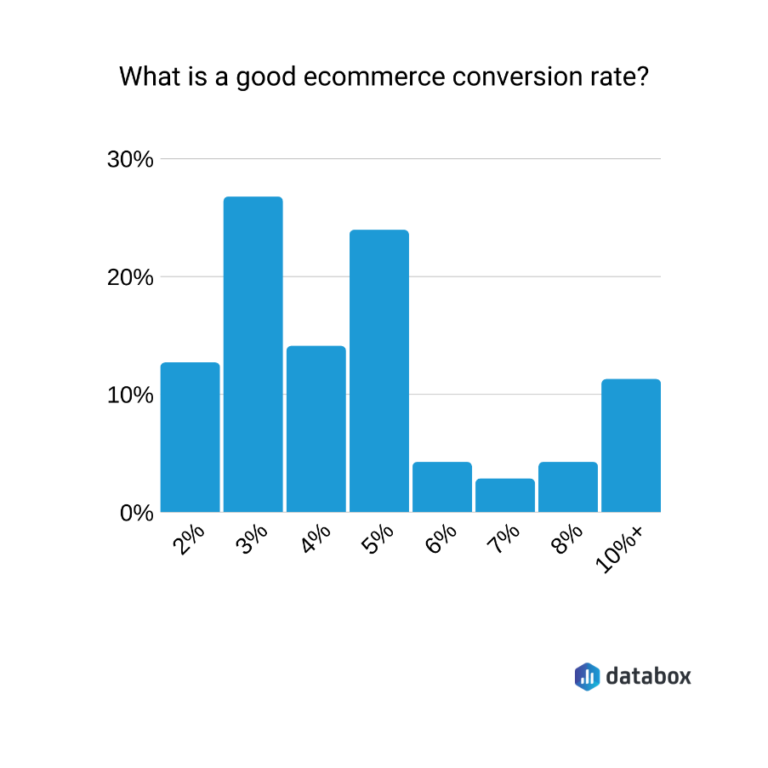
10 Easy Tips to Double The Conversion Rate Of Your Online Store

Whether you’re bringing people to your online store via content marketing, paid ads or affiliates, each visitor who leaves your website without purchasing anything is a dropped opportunity. Therefore Conversion Rate Optimization (CRO) or, in other words optimizing your website for more sales is excruciatingly essential.
A conversion on an eCommerce website is reported when a user takes a required action on your website. The needed action can typically be a sale, although this might also be adding an item to the cart or signing up for a newsletter.
Hence, your eCommerce conversion rate is the process of leading your prospects towards your desired outcomes and tracking their movement as they do so.
In this article, we will share ten easy tips to help you optimize your eCommerce conversion rate and bank on the growing digital market.
What is a reasonable eCommerce conversion rate?
According to a survey of more than 70 eCommerce marketers, 64% of them report conversions between 3% and 5%.
So, while your store’s conversion rate will undoubtedly vary based on your industry, price point, target demographics and more, that 3-5% range can act as a benchmark for getting started in terms of better understanding and augmenting your customer journey.

Let us look at the ten easy tips that will double your website’s conversion rate in no time.
1. Website Speed Optimization
Optimizing your website’s page speed will enhance the user experience for your shoppers and improve satisfaction. Interestingly, if your website takes more than two seconds to load, 53% of your shoppers are bound to lose interest. In fact, a single second lag can result in a 7% loss of conversions, so consider heightening the website loading speed as a vital part of the eCommerce Conversion Rate Optimization process.
Also read: Top 6 Reasons Why Omnichannel Experience Strategy Is Important For Boosting ECommerce Sales
What can you do to optimize your website’s page speed?
- Test your website’s speed; how fast does it load?
- Go for optimization of images by compressing the sizes. This will profit you greatly because pictures with sharp clarity fill more space on the website source.
- Use website caching to store a version of your website that can be delivered on-demand.
- Deploy a Content Delivery Network (CDN) for geographical advantages.
You can utilize Google PageSpeed Insights or GTMetrix, or Pingdom to check your site speed.
2. Keep The Layout and Design Clean and Simple
A clean and simple design will help you showcase your eCommerce store’s every feature in an easy to discover and engaging manner. A good user experience on your website will further help your customers make purchasing decisions quickly. 80% of online shoppers quit shopping from an online store because of confusing UI. You want your leads to have a smooth, seamless experience, guiding them towards what they’re looking for. To ensure that, the search bar on your website should be prominent. On average, 30% of e-commerce site visitors use the site’s search functionality. And, more precisely, visitors who find what they’re looking for convert easily. The CTA buttons on your website should draw attention without being annoying. Even the colour of a button for a CTA can affect its effectiveness.
Also read: 5 ECommerce Marketing Trends That Cannot Be Avoided In 2021
3. Optimize for Both Desktop and Mobile
You are not aware of your target customers’ devices, so optimizing your eCommerce website for mobile and desktop platforms is essential. It is possible to reach the maximum number of shoppers with your products and improve conversions by going for a responsive design. And, since Google has moved to mobile-first indexing, your website has to take a mobile-friendly approach nonetheless. Mobile eCommerce accounts for 50% of the market presently. Consequentially, you can’t afford to ignore mobile users. In short, keep your eCommerce website responsive for every device and make the viewing experience optimal, irrelevant of the channel or platform.
Also read: Google Analytics 4 (GA4) – A Complete Guide With Introduction And Highlights
4. Add High-Quality Product Images and Videos
The most helpful thing for a customer is to see a complete image or product video on a single page. Given below are some optimization tips that you can implement right now without spending a single penny.
- Generate eminent interactivity with product images. Allow shoppers to pinch, zoom, rotate, and scale the photos to their liking.
- Add white background around the product to create a sense of focus.
- Use high-resolution images if possible.
- Use a variety of photo angles and options.
Nowadays, multiple paid and free tools are available that you can utilize to elevate your site’s images.
Also read: Key Customer Experience (CX) Strategies To Drive Conversions On Your ECommerce Website
- Kraken has packages that begin at $5/month.
- TinyPNG is free of cost.
- If you’re not comfortable with online tools, you can download RIOT software for a free of cost desktop option.
A high-quality product image is sufficient, but a product video is better for a comprehensive presentation. If you’re not producing product videos yet, do them for your site and see how it makes a difference.
Product videos and high-quality product photos can make help accentuate the eCommerce conversion rate measurably.
5. Use Cart Abandonment Software
The cart abandonment rate for the eCommerce industry is close to 70% globally.
Use cart abandonment software in case of recurring bounces; for instance, a user lands on your website, adds an item in the cart and then leaves! In this case, abandoned cart software can help you pinpoint the reasons and figure out an actionable plan to optimize your website’s conversion rate.
The software works with users that have added items to their shopping cart, entered their email and details and then left your website. It enables you to create follow-up emails sent to the users via email with their cart contents and a coupon code to get a discount to complete their orders.
6. Easy Checkout Process
If your website’s checkout method is too lengthy, complex or unusual, you may lose shoppers by the ton. With a streamlined and straightforward checkout process, the buyers cruise through any checkout stage and smoothly purchase your products. Prospects and leads often hesitate to enter their personal credit/debit card details while making any purchase. Installing the requisite security certificates and displaying them on the payment page usually works wonder. Just make sure not to present them any reason to feel uncomfortable or make it hard for them to trust your website.
Allow Buyers to Checkout as Guest
Mandatory registrations to buy from your online store should be avoided. Allow customers to browse and complete their purchase without going through the lengthy signup process. If they are pleased with the outcomes, they will go through the signup process for future purchases!
7. Experiment with the CTA copy
Using Generic CTAs like “Sign up” and “Start trial” won’t give you the most effective conversion rates. Spend some time improving the copy, and it will provide you with an easy outlet to win. Begin with a CTA that commences with “Yes.” It’s highly efficient psychologically because it outlines the offer in a positive light. For instance, try this: Yes, I want [your offer]!

It works a lot better than a generic CTA copy. Try various CTA buttons and copies to see which ones get the best clicks. Heatmaps and recordings tell you when visitors avoid the CTAs. Then you understand you have a problem and need to spend time changing the necessary elements.
8. Provide a money-back guarantee.
As marketers and business owners, we understand consumers want to avoid risk. They don’t want to invest in something unless they’re reasonably sure about getting what they paid for. A money-back guarantee helps lessen these fears and move past objections.
If you’re concerned about losing all your sales because of returns, don’t be. In Neil Patel’s video, he explains three of his best insider tips for offering money-back guarantees.
As Neil Patel mentions, money-back guarantees aren’t just a fast way to increase your conversion rate. They also build dependence and help the consumer feel more confident.
9. Use a countdown timer.
It’s natural to become apprehensive when time is running out. So, using a countdown timer on your landing page may be just what you need to capitalize on this feeling.
According to Neuroscience Marketing, using a countdown timer can raise urgency, leading to a more significant conversion rate.
CXL also explains how one brand increased sales by 332 per cent by using a limited-offer sign with a countdown clock. The addition of a limiting period, which should only take a few minutes, can immediately boost your conversions.
10. Combine SEO and CRO.
Keyword optimization does much more than driving traffic to a website. When you combine SEO and CRO, you can increase both traffic and conversions. This is perfect for an eCommerce site. And you don’t have to reduce the importance of one for the other. SEO optimizes content for ecommerce website on search engines to get the website’s ranked higher. CRO (conversion rate optimization) optimizes visitors and customers’ content to drive them towards completing the call-to-action.
But uniting the two isn’t always straightforward.
According to Neil Patel, to optimize SEO and CRO, you only want to change three things that impact Google’s ranking algorithm –
1. Keywords and on-page SEO
2. Content quality
3. User and usage data.
Below are the keyword research tools available to help improve your SEO and get visitors to your site:
- Google Keyword Planner
- KWFinder
- Moz’s Keyword Explorer
- Keyword Tool
- SEMrush
And below are the CRO tools to make sure that your on-page copy is built for conversion:
Conclusion
To boost conversion rate is to improve your marketing return on investment. The more users you convert, the higher is the impact you drive on your top line from your current traffic. The tips mentioned above are great to start to improve your conversion rates strategically. Keep in mind that some of these are likely to drive better results for your business than others. The important thing is defining your goals, gathering data, and continuously running objective tests to find out what resonates with your target audience.
We are happy to help you, if you have any questions regards to conversion rate optimization (CRO), contact us know by clicking here.




